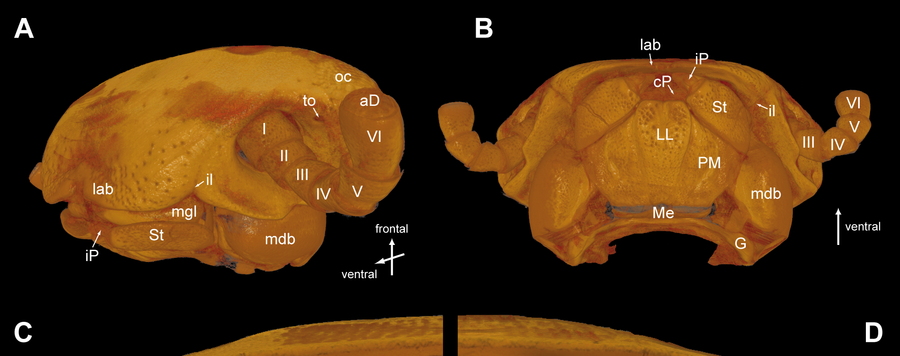
Two new Sphaeromimus
The species-rich giant pill-millipedes (Sphaerotheriida) often represent a microendemic component of Madagascar’s mega-invertebrate fauna. Of the chirping genus Sphaeromimus de Saussure & Zehntner, 1902, ten species have been described. Here, we describe two new species of Sphaeromimus integratively, combining light microscopy, scanning electron microscopy, DNA barcoding and micro-CT technology for the first time in a taxonomic description of a giant pill-millipede. S. kalambatritra sp. nov. and S. midongy sp. nov. are the first giant pill-millipedes collected and described from the mountainous rainforests of Kalambatritra and Midongy. Both species show island gigantism compared to their congeners. Our analysis of the mitochondrial COI gene shows that the two species are related to one another with a moderate genetic distance (9.4%), while they are more closely related to an undetermined specimen from the forest of Vevembe (6.3% and 8.4%). They stand in a basal position with S. ivohibe Wesener, 2014 and S. musicus (de Saussure & Zehntner, 1897). The four aforementioned species share a high number of stridulation ribs on the male harp. Our micro-CT analysis provides a look into the head of S. kalambatritra sp. nov. and shows that non-destructive CT methods are a useful tool for studying the inner morphology of giant pill-millipedes.






